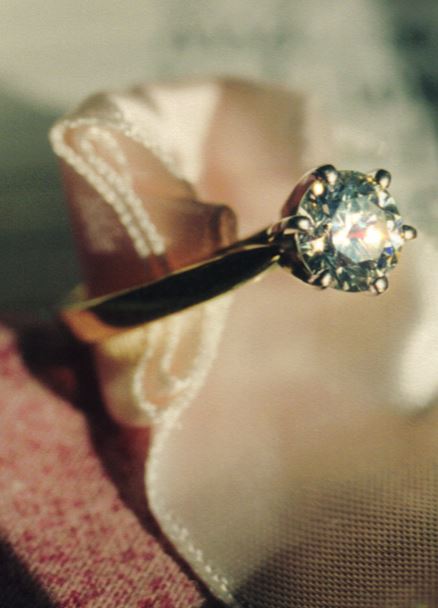The Diamond Cut And The Light Performance Of Diamonds
The diamond cut is perhaps the most important characteristic of the four Cs. It doesn’t relate to the actual shape of the gemstone, but rather to its proportions and to its symmetry. Diamond cutters have to minimize waste, so sometimes they need to compromise, in order to obtain a carat weight as big as possible. However, when this is done on the expense of the cut, the gem may be compromised.
The path of the light through the crystal is the one that gives its brilliance and its fire. This path is determined by the perfection of the facets and by the angles between them. Whenever these angles aren’t the right ones, the light takes a different route, some of it never seeing the eye of the observer.
What to Compromise on When Buying Diamonds
 When shopping for diamonds, you can try to fit inside a given budget by compromising on the color and on the clarity. There are gems that look amazing, despite the fact that they have lower grades in these two respects. Nonetheless, you are never going to find a good looking diamond with a poor cut grade. This isn’t possible, because a poor grade has direct consequences on the light performance of the stone. In order for the light to move through the crystal, it needs to go through a series of reflections and refraction. This is pure geometry, so it’s easy to understand why a less than perfect angle between two facets or a too long distance between the top facet and the base may result in a dull, average diamond.
When shopping for diamonds, you can try to fit inside a given budget by compromising on the color and on the clarity. There are gems that look amazing, despite the fact that they have lower grades in these two respects. Nonetheless, you are never going to find a good looking diamond with a poor cut grade. This isn’t possible, because a poor grade has direct consequences on the light performance of the stone. In order for the light to move through the crystal, it needs to go through a series of reflections and refraction. This is pure geometry, so it’s easy to understand why a less than perfect angle between two facets or a too long distance between the top facet and the base may result in a dull, average diamond.
As their brilliance is the one that has made diamonds so famous, it’s worth mentioning that this property is the result of reflections on all facets of the stone. Manual cutting is always subject to geometrical flaws, as it is very hard to obtain such perfection with your bare hands. However, the averaging process can wash away all these asymmetries and flaws, thus creating a gem that looks awesome, despite its lower cut grade. Thanks to modern 3D cutting technology, the processing of the diamonds from rough crystals is redefined.
These cutting machines can be programmed to create the right facets with all the good angles between them, in order to obtain superior quality diamonds each and every time. There is still a need to minimize thew waste, but when machines do the calculations, things are easier. These machines are able to reproduce the path of the light through the stone, thus being able of performing a direct assessment of the performance of the light. By varying some parameters, it is possible to create multiple scenarios and models, so the influence of each and every facet of the gem is very easy to observe. This technology progress represents a very important leap forward for the diamonds industry. It has never been easier to obtain such a brilliance and such a symmetry, without having to compromise a lot on the carat weight. Now, every rough crystal has the potential of becoming an awesome gemstone. We have another post on designing an engagement ring by the way.
What makes up Light Performance
Although there are multiple factors that contribute to the light performance of diamonds, it’s safe to assume that the cut is the most important. However, the other factors can also influence this performance a great deal, so they can’t be ignored. This is why humans are still needed in this process. Machines can do an outstanding job at cutting the perfect surfaces and the most awesome 3D models, but only humans are able to put all these key elements together in order to come up with the best solution for obtaining outstanding results more often than not.

Since the patterns of the light in the diamond is so complex, it makes sense to consider various trade-offs in its design. Nonetheless, only the eye of an expert can decide upon the best ones, for a magnificent end result. All these tiny regions of light you can see when looking at a diamond are like virtual windows into the surrounding world. Good stones appear to be coming alive with each rotation, with each change of the scenery around them, and with each modification of the lighting. A diamond is a tiny world of brightness, but only when its proportions are as close to perfection as possible.
